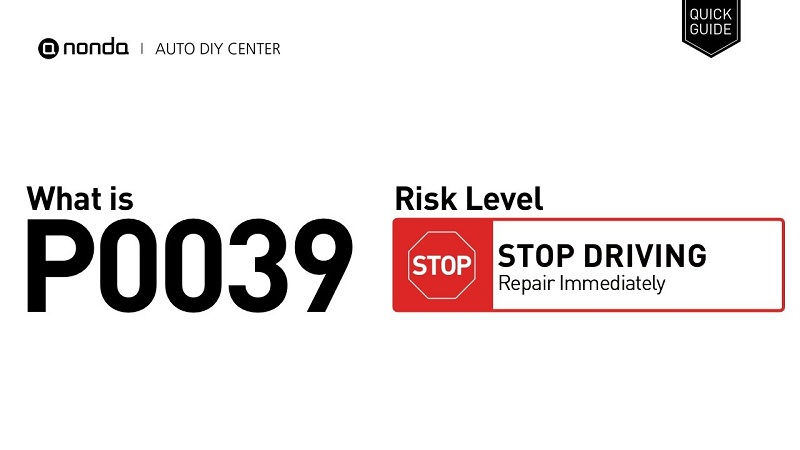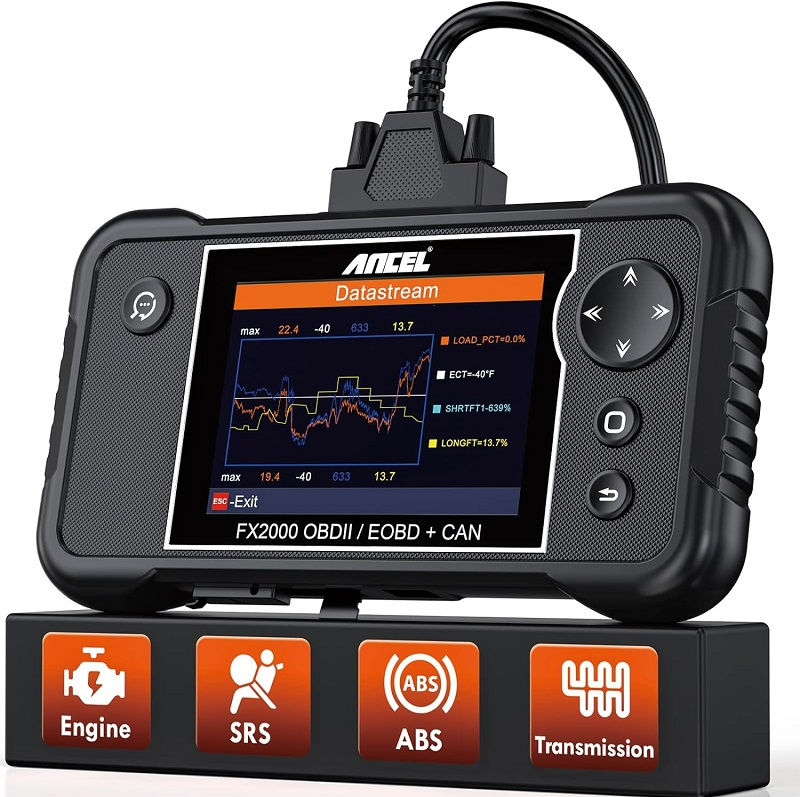This post contains affiliate links. This means I will make a commission at no extra cost to you should you click through and make a purchase [ “As an Amazon Associate, I earn from qualifying purchases.” ]. Read the full disclosure here.
P0039 Turbo/Super Charger Bypass Valve Control Circuit Range/Performance GuideMechanic.Com In the realm of automotive diagnostics, deciphering trouble codes is akin to unraveling the mysteries of a vehicle’s inner workings. One such code, P0039, revolves around the Turbo/Supercharger Bypass Valve Control Circuit’s range or performance.
In this comprehensive article, we embark on a journey to unravel the complexities surrounding P0039, exploring its significance, potential causes, diagnostic procedures, and effective solutions.
See Also: P0037 HO2S Heater Control Circuit Low (Bank 1 Sensor 2)
P0039 Turbo/Super Charger Bypass Valve Control Circuit Range/Performance
Understanding P0039:

P0039 is part of the OBD-II (On-Board Diagnostics II) system, a standardized protocol implemented in vehicles to monitor and report malfunctions related to engine performance and emissions control. Specifically, P0039 signifies an issue with the Turbo/Supercharger Bypass Valve Control Circuit’s range or performance.
To comprehend the implications of this code, it’s essential to understand the role of the turbocharger or supercharger bypass valve in the engine’s operation.
Turbochargers and superchargers are forced induction systems designed to increase an engine’s power output by compressing air before it enters the combustion chamber.
The bypass valve, also known as a wastegate (in turbochargers) or bypass valve (in superchargers), regulates the boost pressure generated by the forced induction system.
This ensures that the engine receives the appropriate amount of air for optimal performance under varying operating conditions.
When the Turbo/Supercharger Bypass Valve Control Circuit’s range or performance is deemed out of specification (P0039), it indicates that the system may be operating outside of the expected parameters.
This could result in issues such as insufficient or excessive boost pressure, impacting engine performance, fuel efficiency, and emissions.
P0039 Turbo/Super Charger Bypass Valve Control Circuit Range/Performance
Common Causes of P0039:
Diagnosing the root cause of P0039 requires a systematic approach and a thorough understanding of forced induction systems.
While precise diagnosis often necessitates specialized tools and expertise, several common culprits are typically associated with this trouble code:
Faulty Bypass Valve:
The turbocharger or supercharger bypass valve may be malfunctioning, failing to regulate boost pressure effectively within the desired range.
Wiring Issues:
Any abnormalities in the wiring harness connected to the bypass valve control circuit can lead to erratic signals or voltage fluctuations, affecting valve operation and triggering P0039.
Electrical Problems:
Faulty connectors, corroded terminals, or poor electrical connections can disrupt communication between the engine control unit (ECU) and the bypass valve, leading to performance issues.
Boost Pressure Abnormalities:
Problems with the turbocharger or supercharger system, such as leaks, blockages, or irregular boost pressure levels, can indirectly affect bypass valve performance and trigger P0039.
ECU Malfunction:
In rare cases, the issue may lie with the ECU itself, which fails to interpret sensor data accurately or send the appropriate commands to control the bypass valve.
Diagnostic Procedures:
To diagnose and address P0039 effectively, automotive technicians typically follow these steps:
Code Retrieval:
Utilize an OBD-II scanner to retrieve the trouble code (P0039) stored in the vehicle’s ECU. This confirms the presence of the issue and provides a starting point for diagnosis.
Visual Inspection:
Conduct a thorough visual inspection of the turbocharger or supercharger system, including the bypass valve, wiring harness, connectors, and associated components. Look for signs of damage, corrosion, or loose connections.
Test Bypass Valve Operation:
Verify the bypass valve’s mechanical operation, checking for smooth movement and proper sealing. Test the valve’s response to control signals manually if feasible.
Check Wiring and Connectors:
Inspect the wiring harness and connectors associated with the bypass valve control circuit for any signs of damage, corrosion, or poor connections. Repair or replace damaged components as necessary.
Test Electrical Signals:
Using a multimeter or specialized diagnostic tool, measure the voltage and continuity along the bypass valve control circuit to ensure proper electrical function.
Inspect Boost Pressure System:
Investigate the turbocharger or supercharger system for potential issues affecting boost pressure, such as leaks, blockages, or irregularities. Address any abnormalities to ensure proper bypass valve operation.
P0039 Turbo/Super Charger Bypass Valve Control Circuit Range/Performance
Potential Solutions:
Based on diagnostic findings, several solutions may be required to rectify P0039:
Replace Bypass Valve:
If the bypass valve is found to be faulty, replace it with a new one from a reputable manufacturer to ensure proper regulation of boost pressure.
Repair Wiring Issues:
Address any wiring problems identified during inspection, such as repairing damaged wires, replacing connectors, or improving grounding connections to ensure consistent electrical signals.
Check Boost Pressure System:
Inspect the turbocharger or supercharger system for leaks, blockages, or irregularities affecting boost pressure. Address any issues to prevent future occurrences of P0039.
Rectify ECU Issues:
If the issue lies with the ECU, consult with a qualified technician to determine the appropriate course of action, which may involve repairing or replacing the ECU to ensure accurate control of the bypass valve.
Perform Software Updates:
In some cases, updating the vehicle’s software or recalibrating the ECU may resolve issues related to P0039 by optimizing control strategies and sensor interpretation.
P0039 Turbo/Super Charger Bypass Valve Control Circuit Range/Performance
Conclusion:
See Also: P0038 HO2S Heater Control Circuit High (Bank 1 Sensor 2)
P0039, indicating a deviation from the expected range or performance of the Turbo/Supercharger Bypass Valve Control Circuit, underscores the importance of precise control in forced induction systems.
By following systematic diagnostic procedures and addressing potential causes such as faulty components, wiring issues, or boost pressure abnormalities, automotive technicians can effectively resolve P0039 and restore optimal engine performance and efficiency.
Regular maintenance and proactive troubleshooting are essential for identifying and addressing trouble codes promptly, ensuring vehicles operate smoothly and reliably on the road.
- P0065 Code: Air Assisted Injector Control Range/Performance - April 29, 2024
- P0063 Code: HO2S Heater Control Circuit Low (Bank 2 Sensor 3) - April 29, 2024
- P0062 Code: HO2S Heater Control Circuit (Bank 2 Sensor 3) - April 28, 2024

